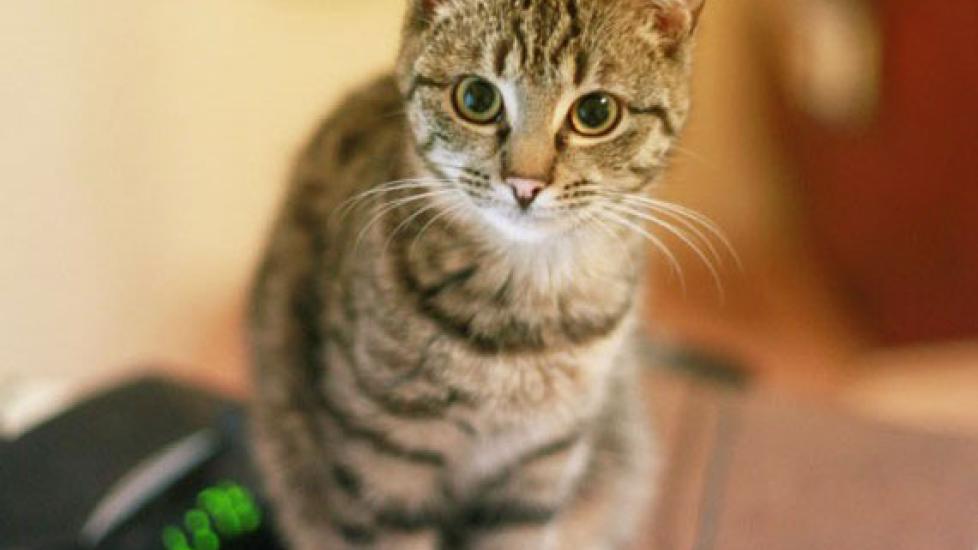Is Your Pet Above or Below Average?
Doctors often interchange the word “average” for “median” when discussing survival times for patients with cancer, but in reality, these are two different terms with two very different meanings.
People are most familiar with the definition of an “average” from their time spent in academic classes, where a numerical average of test scores translated into your grade for a particular class. If you scored 50 on your midterm but a 100 on your final, your average grade was a 75. The high score offset the low score, and in the end, though you technically failed the midterm, you ultimately passed your course.
“Median” refers to the number that occurs directly in the middle of a series of numbers, splitting the lower half from the higher half. In the following series of numbers: 3, 5, 7, 8, and 700, the median would therefore be 7.
At first glance, after examining the explanations of the two different statistical terms, you might expect survival times for studies looking at pets with cancer to be reported in averages. However, what is truly a more relevant measure for the average pet is actually the median.
The problem with simply reporting an average survival time is that this number will be skewed by what are known as outliers. Outliers are cases who live extremely short or exceptionally long periods of times after a diagnosis. When you factor their longevity into a survival pattern, they can skew the average in one direction or another. The median will account for the outliers and essentially dismiss them, serving as a better representation for the outcome of the population as a whole.
For example, consider 10 pets diagnosed with a certain type of cancer. If the survival time for 9 of the 10 pets is 50 days, and 1 of the 10 pets is 4 years, the average survival time for that particular cancer would be 191 days, whereas the median survival would be 50 days. Though 191 days is certainly numerically more appealing to report to an owner, when you look at the population of pets with cancer we are discussing, it would represent an unrealistic expectation. We know 9/10 pets will live only 50 days.
Despite knowing that medians are more accurate for populations as a whole, it’s always hard to discredit my personal experience with the outliers. Specifically, I’m referring to the patients who outlive their expected survival times and quite literally “beat the odds.” These few cases are the ones that stand out in my mind when I’m talking to owners.
Dogs with lymphoma live about one year with treatment. Their feline counterparts live 6-9 months. Dogs with hemangiosarcoma live about 4-6 months with treatment. Dogs with nasal tumors treated with radiation therapy live about 1 year, as do those with osteosarcoma treated with amputation and chemotherapy. For each of these scenarios the median survival times are well established and very predictable for the “average” patient.
Yet for each example, I can think of patients who lived much longer than the odds suggested. Sometimes my natural tendency is to question the diagnosis in the first place (“the biopsy must have been wrong because there is no way that dog/cat could be alive right now!”). It’s funny how quick I can be to discredit that the treatments I prescribe could create an outlier.
It’s hard not to think of those long-lived cases when talking to owners of pets newly diagnosed with cancer. This is especially true for when I talk about a median survival time and owners seem disappointed in the statistics.
The best explanation for most cases in veterinary oncology is that our numbers may seem short because our treatment protocols are less intensive than those created for humans. Our trade-off for inciting less toxicity in our patients is a much lower cure rate, and shorter overall survival times.
The hardest part is when I know I’ve seen pets experience extraordinary outcomes. I was trained to accept that “we do it for the 5 percent,” meaning veterinary oncologists know the statistics and probabilities, but 5 percent of the time we will have an outcome that far surpasses our expectations. One hundred percept of the time I want my patients to experience that 5 percent chance of a cure.
Regardless of what the medians tell us, we always say, “There’s nothing average about your pet” on our service.

Dr. Joanne Intile
Image: Thinkstock
